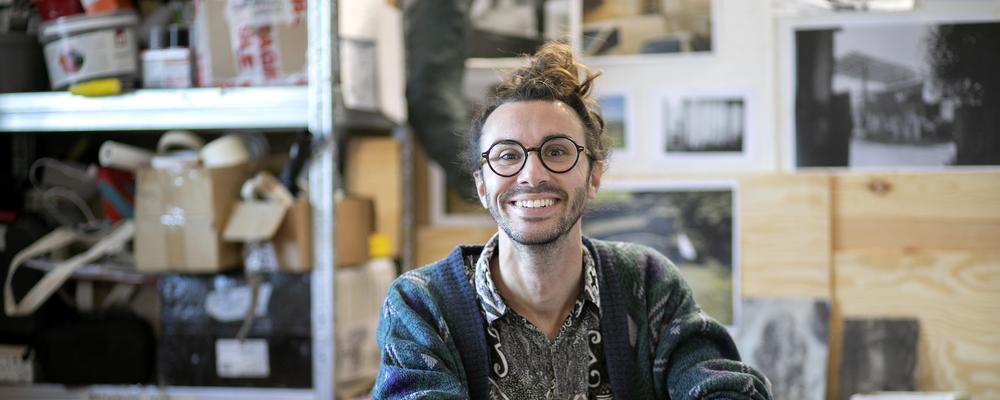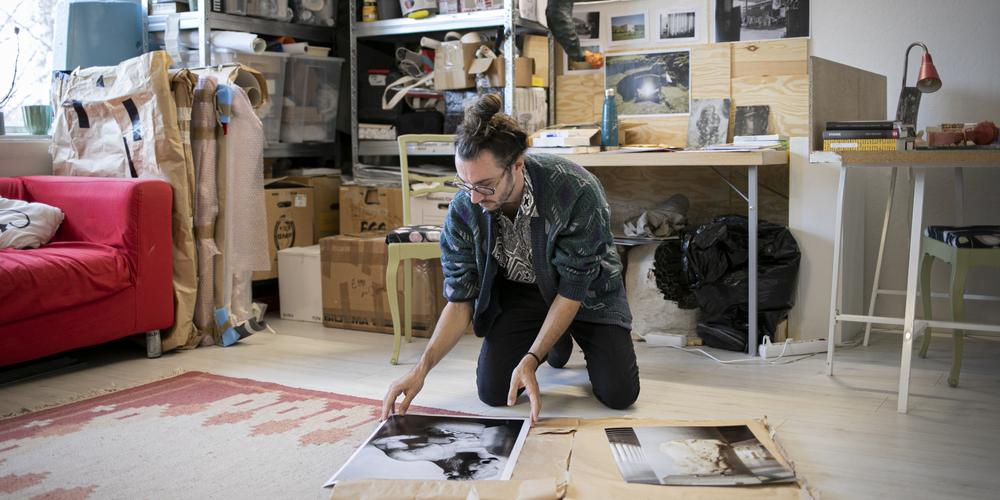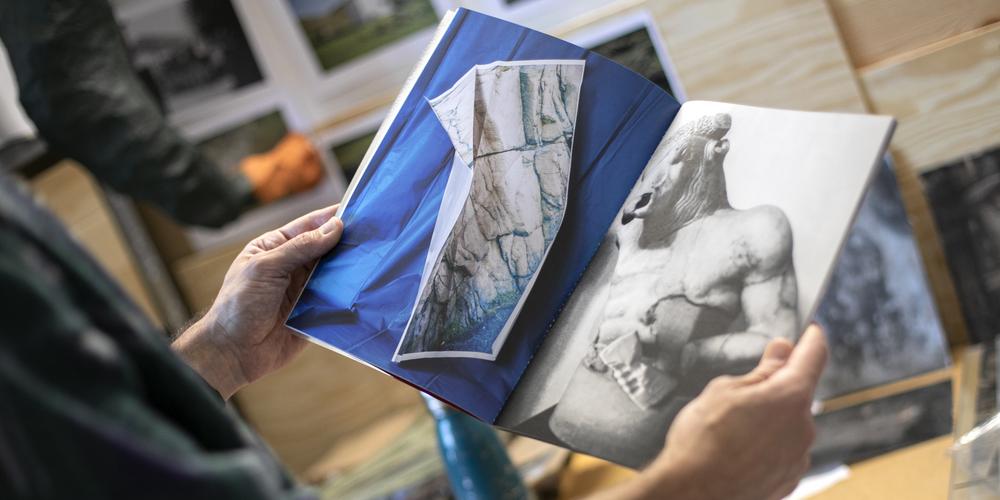
- Home
- News and events
- Find news
- Stefano has created his own space for spontaneity and playfulness
Stefano has created his own space for spontaneity and playfulness
Stefano Conti first studied to become an advertising and fashion photographer. But he promptly realised that this was not where he belonged. So he changed paths and earned a master’s degree in photography from HDK-Valand. “I realised there was more I could express through photography,” he says.
Italian-born artist Stefano Conti has an upcoming exhibition in Malmö in January. A few months later, his work will be shown at a gallery in Milan. It has been this way essentially since the spring of 2020, when he completed the master’s programme in photography at HDK-Valand. He travels often, but his home turf is the studio space on Hisingen, just a next to Backaplan. He shares the space with three other artists who also attended HDK-Valand. One of them is Emma Sandström, whom Stefano met in while studying at the MFA Programme in Photography at HDK-Valand and is now the other half of the artist duo Emma & Conti. The exhibition in Malmö is done together as Emma & Conti.
“Our backgrounds are different, but during our second year at HDK-Valand, we realised that we have common interests. The first show we ever had together was at the school’s student gallery,” he says.
Having a partner for an exhibition basically offers nothing but advantages, according to Stefano.
“It isn’t just that you have someone to share your crises with; it’s also more playful when we work together. We’re more spontaneous and we can experiment as we go. Especially me, because otherwise I overthink everything,” he says, adding, “I want the studio to be like a playground. There are no rules here, no critical eyes. It’s much freer than it was in school, where we were constantly forced to be intentional about our various decisions and artistic choices.”
Rooted in history
Emma and Stefano’s show is focused on cultural heritage, archaeology and human relationships to primarily prehistoric objects. The work began when Stefano had a residency in Sardinia, Italy, and visited an old Iron Age burial site.
“We’re studying how the materials are moved from the burial site to museums. The fascinating thing isn’t the objects themselves, but rather how we as people treat them,” explains Stefano.

Sardinia is also where he first encountered and tried out a Japanese rice paper printer. From the outside, it looks like an ordinary laser printer, but because it prints one colour at a time, it offers completely different artistic possibilities. Stefano describes it as a technique that allows for mistakes and whose results are closer to screen prints than digital prints.
Back in Sweden, Stefano had the chance to teach his new skills to other Gothenburg residents as part of a photography book festival at Litteraturhuset in late November.
“The Artists’ Collective Workshop (Konstnärernas kollektivverkstad, KKV) had rice paper printers, but they aren’t easy to use. So at the photography book festival, I gave a workshop on how they work,” he says.
Photography books in particular have a special place in Stefano’s artistry. Just as he combines objects and photography when creating an installation, when working with photography books, he might use a mix of images and poetry.
“I’ve probably always expressed myself through storytelling that involves turning pages, a narrative in sequences. But I first understood this at HDK-Valand when I realised that the photography book is an excellent format for exploring that further,” he says.

Overall, he feels that his time at HDK-Valand helped him find his voice, which is what he needed after earning his bachelor’s degree in commercial photography at an art school in Italy. That programme gave him an understanding of lighting and much more, but it did not actually suit him.
“It was way too rigid and structured. In Italy, everything is about going through a programme and then getting a job as fast as possible. I wanted to continue to deepen my interest in photography, but in a more artistic direction. That’s why I applied to HDK-Valand and that’s why I chose Gothenburg over a few other schools I applied to,” says Stefano.
In addition, he already had a positive view of Gothenburg as a city.
“I had been in Gothenburg as a tourist and I knew I liked the people and the place.”
Will you stay here?
“My friends are here. Sure, sometimes I miss Italian food and sunshine, but I’m happy in Gothenburg and I enjoy how much interest there is in photography in this city.”
By: Camilla Adolfsson

